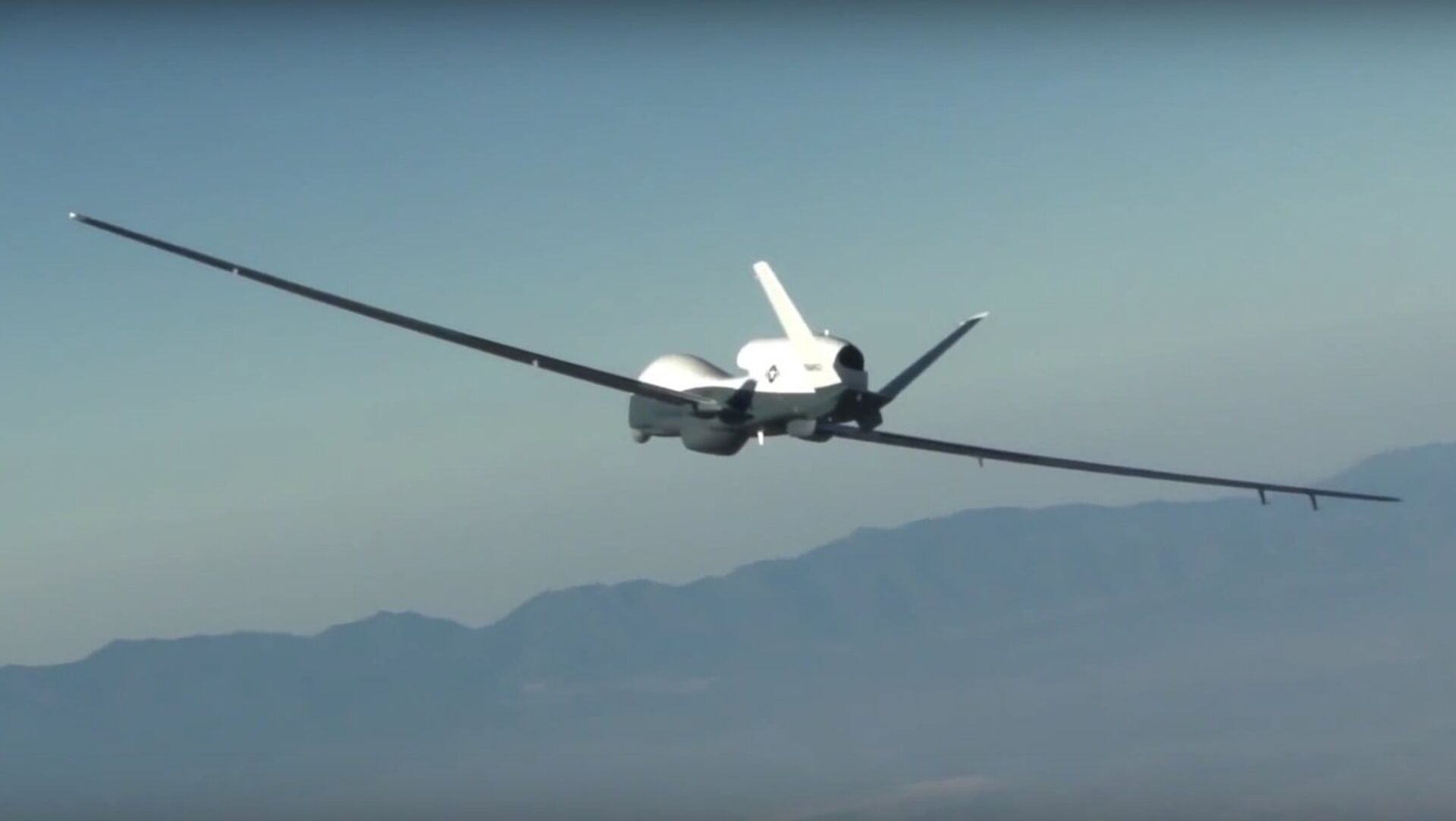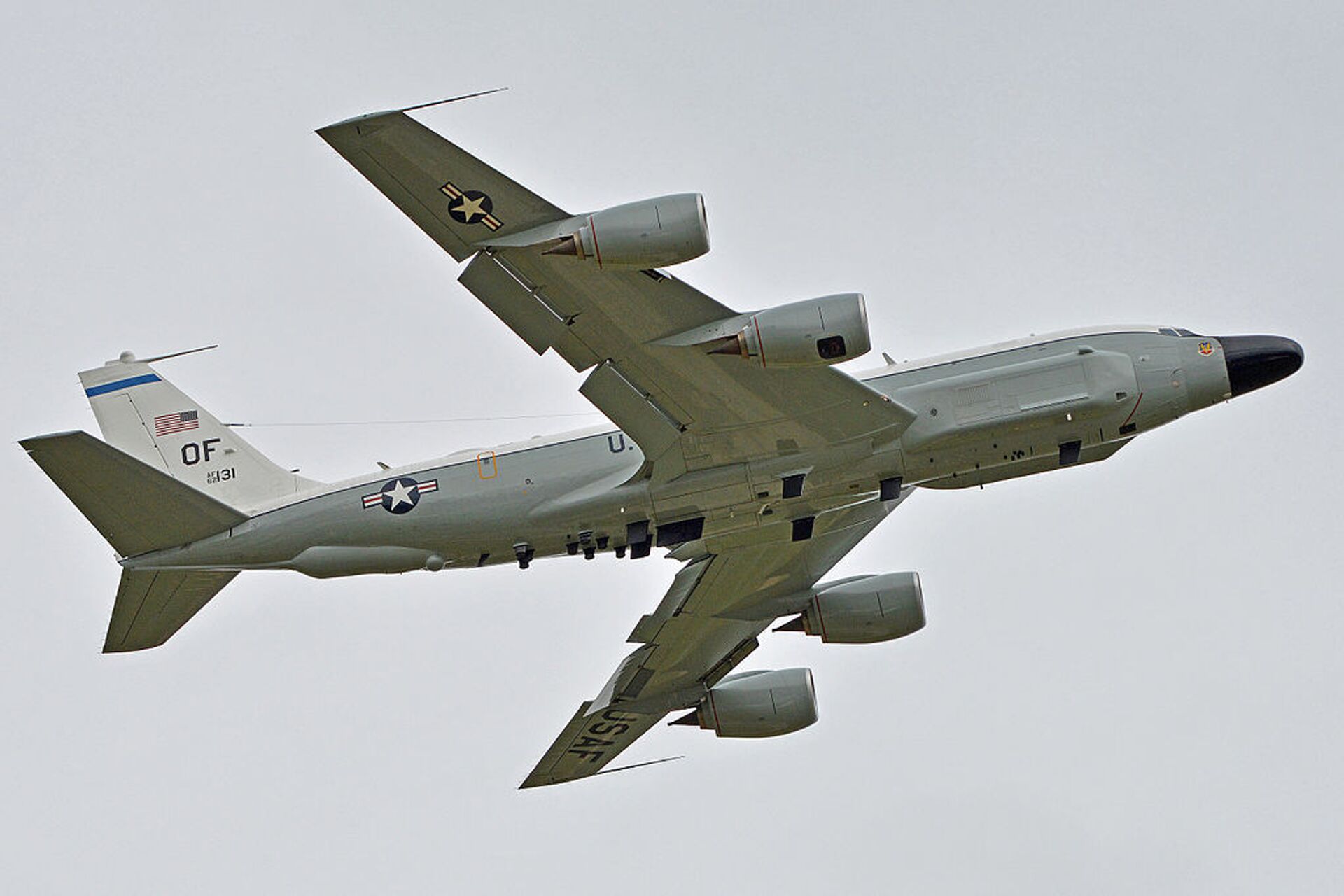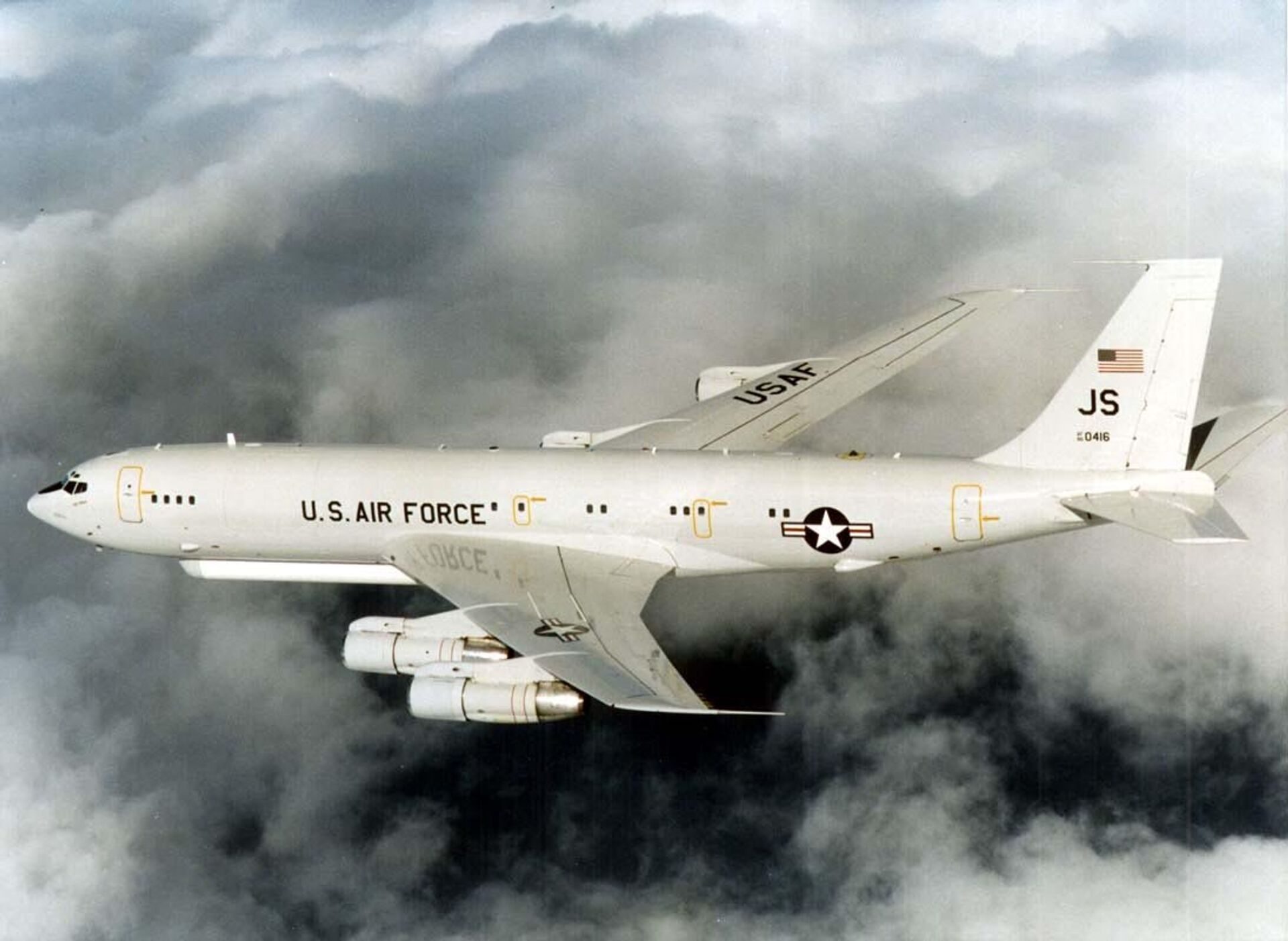According to a new report by a Chinese think tank, the US performed more “freedom of navigation operations” (FONOPS) and more surveillance flights over the South China Sea in 2020 than any previous year. While the US performed fewer military drills in the region, those it held were far more provocative than prior years, appearing to rehearse future military operations instead of simple displays of force.
The South China Sea Probing Initiative (SCSPI), a think tank connected to the University of Peking, noted some key changes in US military behavior in a recent report on US operations in the South China Sea last year. The think tank notes the report is “incomplete” because its data is largely derived from open source intelligence (OSINT), such as automatic dependent surveillance-broadcast (ADS-B), a satellite-based navigation system used by aircraft that might not account for more secretive missions.
Reconnaissance Flights
According to the report, the US military conducted at least 1,000 reconnaissance sorties across the seas off China’s coast, flying from a variety of bases including Osan Air Base in South Korea, Kadena Air Force Base in Okinawa, Andersen Air Force Base in Guam, and Clark Air Base in the Philippines, using more than a dozen different manned and unmanned aircraft types.
More than one in 10 of those missions involved US military aircraft disguising themselves as the civilian aircraft of another nation. As Sputnik reported, these aircraft changed their International Civil Aviation Organization-assigned hex codes in order to confuse onlookers - an action that, if not technically illegal, at the very least exposes innocent people to increased danger. More than one airliner in history has been shot down after being confused for an enemy spy plane.
In addition, the US began flying several spy planes owned by civilian defense contractors across the region last year. These planes, based on private business jets, do not have the same capabilities as larger intelligence-gathering aircraft, suggesting that US intelligence demands off China’s coast are greater than its present fleet is capable of meeting.
FONOPS, Taiwan Strait Transits
According to the report, the US performed both more FONOPS near China’s stationed islands and reefs in the South China Sea and more transits of the Taiwan Strait in 2020 than in any other previous year.
In 2020, the US sent warships through waters off the Paracel Islands five times and through waters off the Spratly Islands four times with the explicit purpose of challenging what the State Department calls “excessive maritime claims.” In 2019, the US performed eight FONOPS in the South China Sea and in 2018 performed five such missions.
Although the US has never ratified the United Nations Convention on the Law of the Sea, it has nonetheless positioned itself as the treaty’s global enforcer; a March 10 report by the Pentagon notes 29 different claims by 19 different nations to which the US takes exception.
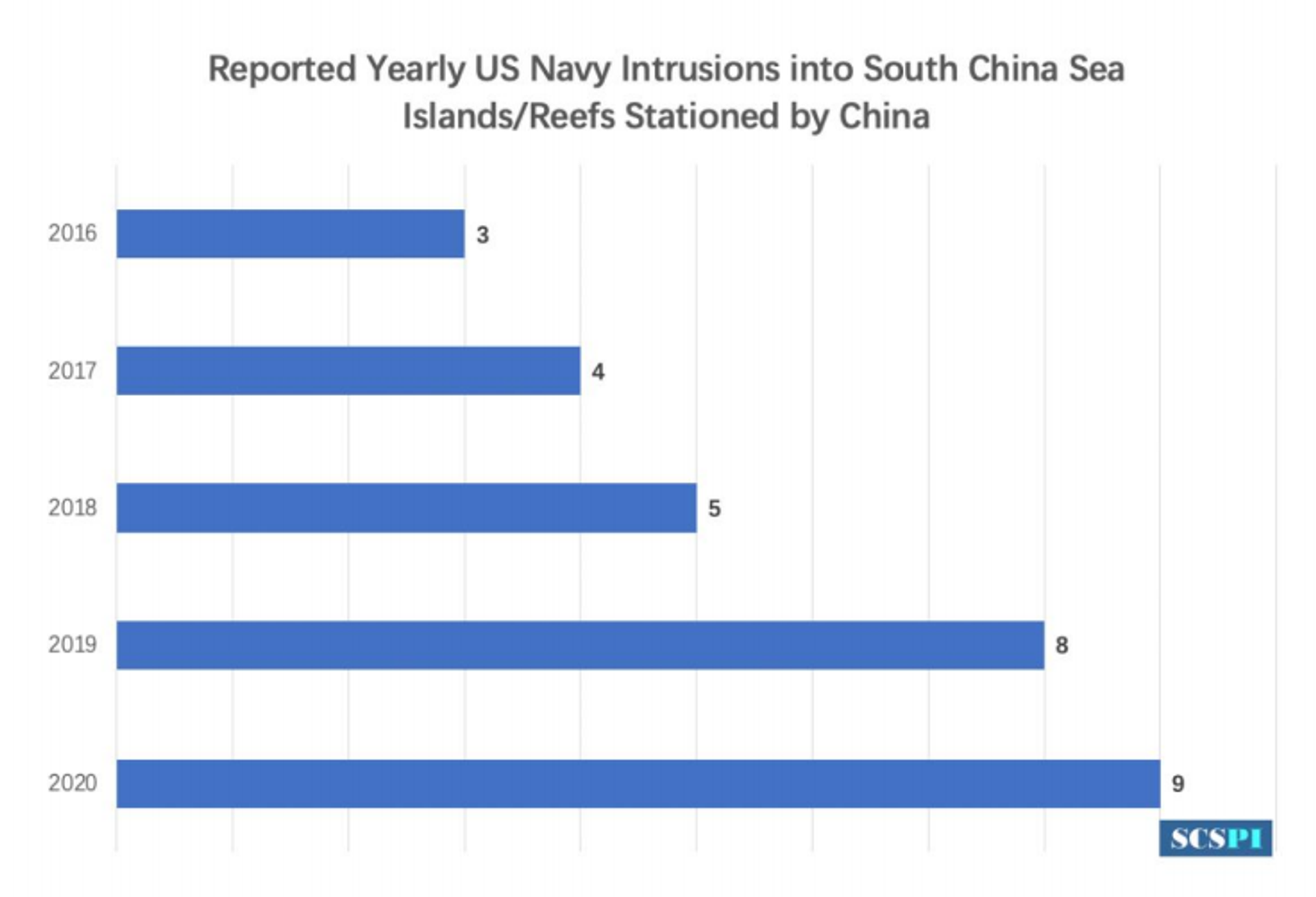
In July 2020, the State Department for the first time issued a formal rejection of Beijing’s historical claims to control the vast majority of the South China Sea, saying it does not recognize most of the claims of control over water, but did not totally reject all of China’s territorial claims. Nonetheless, the US has sought to punish figures and entities that are part of China’s reclamation and expansion of those small islands, and makes easy use of alleged Chinese aggression in rhetorical posturing against Beijing.
The US also performed an unprecedented 13 transits of the Taiwan Strait last year, as well as the first dual-aircraft flight over the strait, and even an exceptional incident in which a US aircraft flew directly over the island. In addition, the director for intelligence for the Pentagon’s Indo-Pacific Command, Michael Studeman, paid a visit to the island in November 2020.
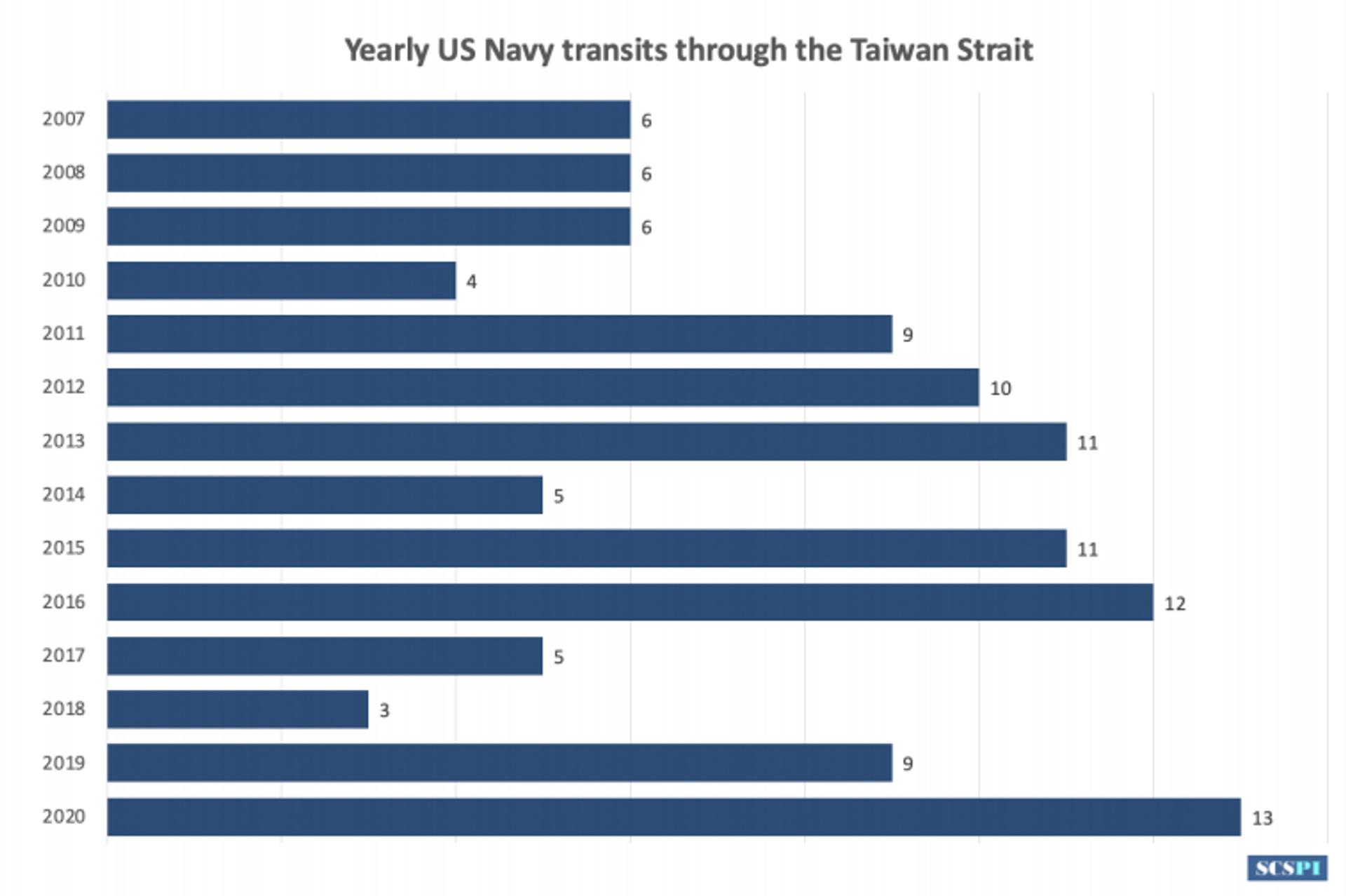
Beijing regards Taiwan as a breakaway province of China, the last remaining part of the old Republic that has managed to guard its independence since 1949 with significant help from the US. Although the US formally recognizes China’s claim, it continues to funnel billions of dollars of weapons to Taiwan to ensure it can repel a potential Chinese invasion.
Rehearsals for War
Due to the onset of the COVID-19 pandemic, which kept much of the US fleet in port for the first part of the year, the number of US military exercises in the South China Sea in 2020 decreased compared to 2019. However, SCSPI noted that the character of those drills that were still held has changed.
“It is worth noting that, unlike routine patrols in previous years, the deployments of US carrier strike groups to the South China Sea and its neighboring areas in 2020 highly resembled live combat,” SCSPI noted in its report.
“For instance, the USS Ronald Reagan CSG [carrier strike group] was deployed to the neighboring areas of the South China Sea for more than four months, during which it swiftly entered and departed the waters several times and collaborated with other carrier strike groups, in the hope of maintaining necessary deterrence and keeping distance with the Area Denial forces of China,” it continues.
In another incident in March, the USS Theodore Roosevelt CSG and USS America amphibious ready group (ARG) practiced expeditionary strike force operations near the Macclesfield Bank, the first time the San Diego-based warship has engaged in such drills.
Further, the US flew its E-8C Joint Surveillance and Target Attack Radar System (JSTARS) spy plane across the region nearly 20 times, focusing primarily on the Bashi Channel and the southern end of the Taiwan Strait. Based on a heavily modified Boeing 707 airliner, the JSTARS carries a host of detection, tracking, and communications systems. Its AN/APY-7 radar can operate in various modes to track ground targets for 250 kilometers in every direction. Additionally, its battlefield management suite can feed that information to commanders of air or surface forces for targeting or intelligence purposes.
SCSPI noted that JSTARS flights often paralleled People’s Liberation Army deployments in Guangdong and Fujian Provinces and Hainan Island, suggesting greater interest in China’s mainland forces adjacent to the South China Sea and Taiwan regions.
Other strike rehearsals have included flying B-52 Stratofortress and B-1B Lancer bombers through the straits north and south of the Philippines. According to SCSPI, if the US were to intervene in the region militarily, it would likely send bombers through both straits at once as a diversionary tactic.

“On the surface, it appeared that the US attempted to engage with the firepower of China with the bomber in the north. Yet, the real purpose is actually to simulate bombarding the Spratly Islands in the south,” SCSPI notes. “This model indicates that the US military is making continued efforts to rehearse airstrikes against the Spratly Islands, which are relatively poorly defended by the Chinese military.”
The US began equipping its supersonic Lancer bombers with the Long-Range Anti-Ship Missile (LRASM) for western Pacific patrols in 2019, part of turning the bomber into what military strategists call a “missile truck.”

